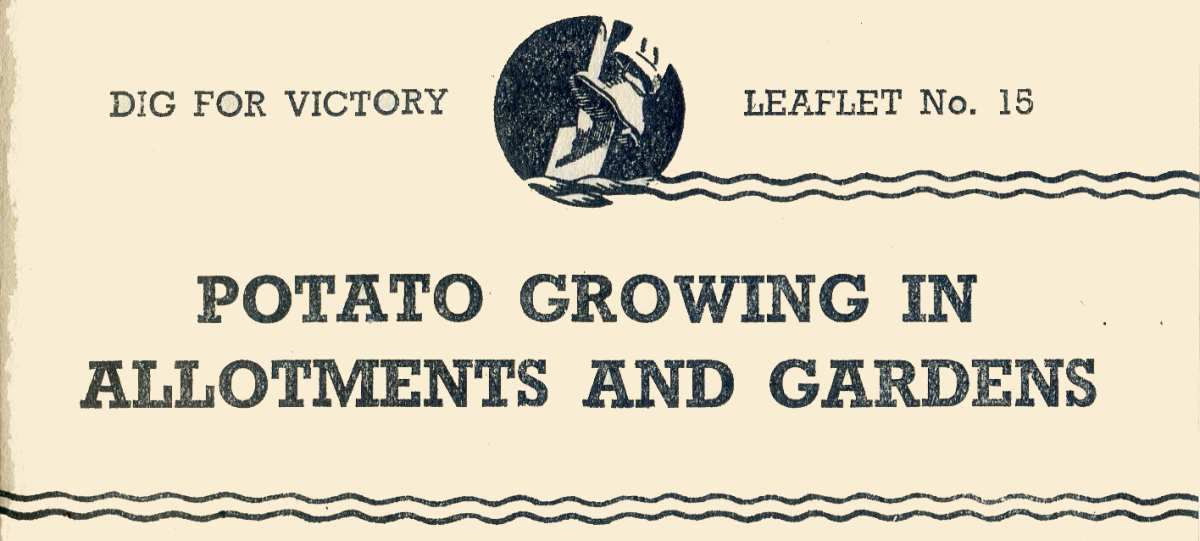 POTATO GROWING IN ALLOTMENTS AND GARDENS
POTATO GROWING IN ALLOTMENTS AND GARDENS
DIG FOR VICTORY LEAFLET No. 15 (Page 3 of 4)
Spring Preparation of Soil
With sprouted tubers there is no need for haste. Wait for favourable conditions before planting. A simple way of planting is to take out shallow trenches 2 ft. apart and 4-5 in. deep in heavy soil, and about 6 in. in light land. The distance between the tubers in the row ought to be not less than 12 in. (15 in. for maincrops).
The yield of maincrop varieties from 5 rods of land should be adequate to provide about 11/2 Ib. of potatoes per day for a year, but very early varieties will not give much more than half this yield, and the proportion of each will need to be considered when making preparations for planting.
Modern recommended spacing for potatoes is still 12 in. spacing for earlies and 15 in. for maincrops with rows 24 in. apart for earlies and 30 in. for maincrops.
Time of planting is not too critical for potatoes. The traditional time in Britain was Easter when the farmworkers would have the time off. This, being a moveable feast, meant the planting time varied quite a lot.
The traditional Irish planting day, which works well in Wales and the north-west of England was St. Patrick’s day. The earthing-up process would help protect the haulm from late frosts
Dung and Artificials
Potatoes respond to generous treatment, and farmyard manure or horse manure should be used wherever procurable. On heavy soil the manure should be used in its strawy form and dug in during the autumn. On light soils dig the manure in in spring when it has become well rotted.
Where manure is difficult to obtain use material from the compost heap, or spent hops, hop manure or composted town refuse to supply humus to the soil. On potash deficient soils, give a dressing of wood ashes. As these contain potash.
Supplies of potash manures are limited, but arrangements have been made allowing allotment holders and gardeners to purchase muriate of potash for application to vegetables during the 1942 season at the rate of 1/2 cwt. to the acre.
Potash fertilizers cannot, however, be packed in lots of less than 14 Ibs., but most non-professional growers will prefer to purchase their potash already mixed in the form of a compound or general fertilizer.
To take a typical example this means that the normal 10-rod allotment holder will be entitled to purchase 42 Ibs. of a compound fertilizer containing 5 per cent. potash (K20).
A portion of this fertilizer should be used at the rate of 3 oz. per square yard on the land intended for potatoes.
The best method is to give a dressing of 11/2 oz. per square yard forked in before planting. Sow the remainder in the drills before planting the sets at the rate of 1 Ib. per 45 feet of row. Tubers should not be dusted with artificials, as the eye or sprout may be damaged.
It is not advisable to apply lime to cultivated soil in the same season in which it is proposed to crop with, potatoes.


